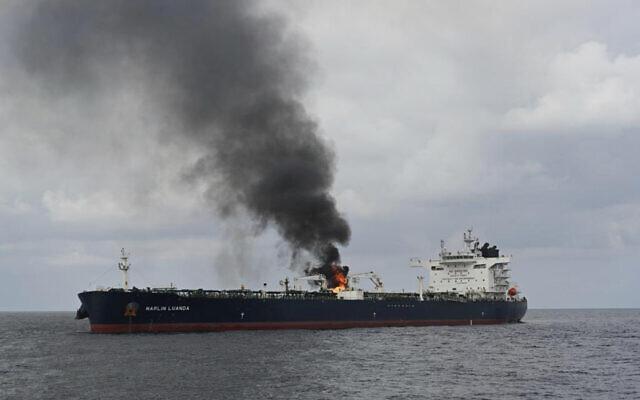
Houthis claim to target container ship in Red Sea, US destroyers in Gulf of Aden
Yemen’s Iran-aligned Houthi rebels said on Wednesday that they had targeted a ship identified as the Contship Ono in the Red Sea as well as two US destroyers in the adjacent Gulf of Aden.
The Houthi air force targeted US destroyer Cole with a number of drones and the US destroyer Laboon with a number of ballistic missiles, the group’s military spokesperson Yahya Saree said.
The Liberia-flagged container ship Contship Ono was targeted with ballistic missiles and drones in the Red Sea, Saree added.
The Houthis have launched repeated drone and missile strikes on ships in the crucial shipping channels of the Red Sea, the Bab al-Mandab Strait and the Gulf of Aden since November to show their support for the Palestinians in the Gaza war.
This has forced shippers to re-route cargo to longer and more expensive journeys around southern Africa and has stoked fears that the Israel-Hamas war could spread and destabilize the Middle East.
The frequency of the attacks, however, appeared to have decreased after Israel hit military targets near Yemen’s Hodeidah port on July 20, killing six people and wounding more than 80, a day after a drone launched by the Iranian-backed group hit Israeli economic hub Tel Aviv.
On Sunday, the Yemeni group claimed the first attack on shipping lanes in two weeks since the Israeli attack by targeting the Liberia-flagged container vessel MV Groton in the Gulf of Aden.
The Houthis have offered no explanation for the two-week pause in their attacks on shipping through the Red Sea corridor. The attacks have seen similar slowdowns since the assaults began in November over Israel’s war on Hamas in the Gaza Strip.
But the resumption comes after the Wednesday assassination of Hamas leader Ismail Haniyeh in Iran, the Houthis’ main benefactor, amid renewed concerns over the war breaking out into a regional conflict. The assassination came hours after an Israeli airstrike on Beirut killed Fuad Shukr, the deputy leader of Hezbollah, which like the Houthis’ is part of the Axis of Resistance regional network of Iran’s proxies.
The rebels have targeted more than 70 vessels by firing missiles and drones in their campaign that have killed four sailors. They have seized one vessel and sunk two in the time since. Other missiles and drones have been either intercepted by a US-led coalition in the Red Sea or splashed down before reaching their targets.
The Houthis maintain that their attacks target ships linked to Israel, the United States or Britain as part of the rebels’ campaign they say seeks to force an end to the Israel-Hamas war in the Gaza Strip. However, many of the ships attacked have little or no connection to the war, including some bound for Iran.
The Houthis also have launched drones and missiles toward Israel, including an attack on July 19 that killed one person and wounded at least eight others in Tel Aviv. Israel responded the next day with airstrikes on the Houthi-held port city of Hodeida that hit fuel depots and electrical stations, killing and wounding a number of people, the rebels say.
In the time since, there has not been a reported attack on shipping through the Red Sea corridor, which links Asia and the Middle East to Europe through the Suez Canal. Since November, Houthi attacks have disrupted the $1 trillion flow of goods passing through the region annually while also sparking the most intense combat the US Navy has seen since World War II.
The killing of Haniyeh in Tehran has sparked concerns of a new escalation in the Israel-Hamas war. Already, the US military says it will move a fighter jet squadron to the Middle East and keep an aircraft carrier in the region.
Source » timesofisrael.com





